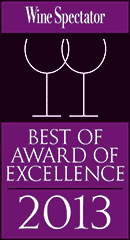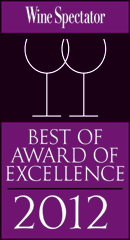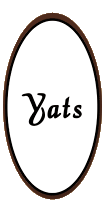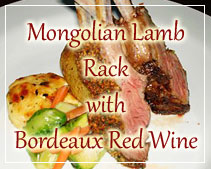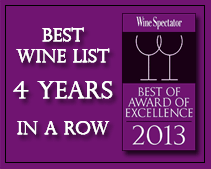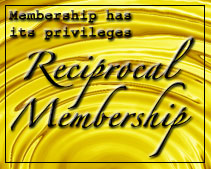Championing white wine of Bordeaux
January 6, 2011
About Wines from Bordeaux
Best wine supplier in Philippines discusses wine related topics
Championing white Bordeaux
Bordeaux whites, wine lovers might say, are forgotten but not gone. Not the famously seductive sweet wines, of course. Sauternes such as the brilliant Château d’Yquem and Suduiraut, and choice Barsacs from châteaux such as Doisy-Daëne and Doisy-Védrines, are very much with us, though hardly populist.
What’s in trouble – indeed, invisible – are Bordeaux’s dry whites: those from the Graves region, which extends 30 miles southeast of the city of Bordeaux along the Garonne River’s left bank and is known primarily for reds.
On the long shelf of France’s decorous aperitif and food-oriented dry whites, those from Graves, and from the Médoc, should rank high. Yet these serious wines suffer tokenism on restaurants’ wine lists and in shops. The Christmas catalog of Zachys, a large-scale merchant in wealthy Westchester County, New York, cited merely seven.
Dry Bordeaux whites are nearly absent in wine auction catalogs, too: In the Zachys Christie’s catalogue for a February 22-23 sale, there was exactly one lot – eight bottles of 1985 Laville-Haut-Brion.
How paradoxical a fate for a class of whites that, at their height of finesse, can rival collectible Burgundies. These full-bodied, pale wines are composed mainly of sauvignon blanc and sémillon grapes that are cultivated on glaciated gravel (Graves) terraces and blended in varying proportions for different stylistic emphases.
Leading-edge dry Bordeaux whites, when drunk young, are mouthwateringly fresh and, owing to the sauvignon blanc, pungent and herbaceous in bouquet and flavor; their brisk acidity virtually guarantees at least a decade’s life. Sémillon provides richness, smoothness and viscosity. Muscadelle, in tiny quantities, adds aromatic grace notes.
As the wine ages, it can become creamy, honeyed and figgy, perhaps melon-like, nutty and round, with the early, nearly sweet oak and vanillin accents diminishing.
White Bordeaux’s distinctive style has spawned a copycat school of California Sauvignon Blancs, which, ironically, sell far better than their mentor.
Quick, can you name top-flight producers of Bordeaux whites? If not, while focusing your attention on Pessac-Léognan, the subdistrict appellation created in 1987 in the northern sector of the Graves region, concentrate on these châteaux: Class A – Haut-Brion, Laville-Haut-Brion, Domaine de Chevalier, de Fieuzal. Class B – Carbonnieux, Couhins-Lurton, Haut-Bergey, La Tour-Martillac, La Louvière, Malartic-Lagravière, Olivier, Pape-Clément and Smith-Haut-Lafitte. And in southern Graves look for the whites of d’Archambeau, le Bonnat, Chantegrive, Clos Floridène, Rahoul and Villa Bel Air.
Some Bordeaux whites are so stratospherically expensive they inhabit the “fuhgeddaboutit” zone, unless you’re flush from an unlikely Wall Street triumph: for example, 1997 Haut-Brion Blanc (about $210).
The pricing of others hover closer to earth: the 1997 Pavillon Blanc de Château Margaux (about $65); this label, perhaps the best Médoc white, introduced me to the genre. Alternatively, consider 1996 Domaine de Chevalier (Pessac-Léognan, about $87) or the 1998 Blanc de Lynch-Bages (Pauillac, about $35).
I have seldom encountered Mouton’s small-production white, Aile d’Argent, and then only as a curiosity and first-course accompaniment at black-tie dinners in fine restaurants, never in retail shops. In my dog-eared wine literature, it is merely an asterisk; surely, it is no better known than the estate’s scarcely seen number two red wine, Le Petit Mouton de Mouton-Rothschild.
For any crucial social or professional occasion, when you’re the buyer, and informed judgment and affordability are concerns, Château Carbonnieux Blanc (the 1998 costs about $28) is a dependable safety net. Alternatively, pick up the stylish Les Arums de Lagrange (the 1998 is about $22), from Marcel Ducasse, the director and winemaker at Château Lagrange, a reinvigorated Third Growth in Saint-Julien that deserves Second Growth status.
Ducasse possesses a keen perspective on the 1990s upgrading of white Bordeaux. Sauternes aside, until 10 or 15 years ago “quite a lot of grapes with rot” went into the dry whites, he says. Until the 1950s or early 1960s, he explains, these whites were sweet, and to produce them “you didn’t need pristine grapes: a bit of rot was okay.” Even when that style died in the early 1960s, “fruit that was less than perfect was accepted.” The result was “heavy, unfruity, stale wines,” he says. But “for bright, clean whites, it’s very important to avoid rot and overripe grapes, which are lacking in acidity – they make the wine flat.”
Ducasse partly attributes the improvements to greater use of sauvignon blanc and less of sémillon and muscadelle. Further, “the quality of the fruit is much better now than ten years ago,” he says. “People wait longer to pick, so the flavors are more evolved.” Because of modern vineyard practices, today’s grapes are not overripe and rot is absent, he adds.
Ducasse says cellar technology also is much better. The main factor is “barrel fermentation with bâttonage,” stirring the lees, to increase their influence on flavor. “Before, mainly old barrels were used, and now it is 50, 60, 70 percent new oak barrels in the best white wines,” he explains.
Not surprisingly, Graves literature has celebrated the region’s wine culture. Both the political philosopher Montesquieu (1689-1755), whose argument for the separation of powers in “The Spirit of Laws” (1748) influenced our Constitution, and the novelist François Mauriac (1885-1970) came from the region.
Montesquieu, whose family owned the Château de La Brède and who himself was a vineyardist and winemaker, wrote that “the air, the grapes, the wines from the banks of the Garonne and the humor of the Gascons, all are excellent antidotes to melancholy.” According to the Conseil des Vins de Graves, he shipped his wine to Paris and “the vast British Empire.”
Many of the writings of Mauriac, who struggled with issues of morality and won the Nobel Prize for literature in 1952, are set in and were influenced by the pastoral setting and the winegrowing life of the Gironde region.
“I have learned to esteem the ‘aristocracy of the cork’ more highly than any other part,” Mauriac wrote. “It plays, in our modern world, a modest, but clearly defined, part. Since the burning of the Tuileries the hereditary nobility of France has lost its function. But the great wine cellars of Bordeaux are eternal, and the vintages of my native land have a right to ennoble the families who serve them.”
Source: http://www.thewinenews.com/aprmay01/comment.html
Are these articles useful for enhancing your wine and dine experience in the Philippines. Do they also help you with travel, leisure, vacation, dining out, nightlife and other leisure activities plans in Manila and other major cities of Philippines? Yats Restaurant hopes to provide you with ample information so you can plan your trips to Pampanga Angeles City Clark Freeport Zone whether you are travelling from Manila or other Asian countries such as Hong Kong, Shanghai, Singapore, Malaysia or Korea.
Restaurant reservations in Manila Philippines, planning of menu, selection of wine for dinner and booking a private function and event in Angeles City Clark Freeport Zone can all be handled. Yats Restaurant and Wine Bar has been regarded by many to be the premier restaurant north of Manila Philippines. Its 3000-line award-winning restaurant wine list has kept many wine lovers happy dining in this restaurant in Angeles City Clark Philippines for over a decade.
Yats Restaurant and Wine Bar was built by Hong Kong-based Yats International in 2000 to provide a world-class cozy fine dining restaurant, business meeting facilities and venues for private dinners and functions in Pampanga Angeles City Clark Freeport Zone. Pampanga Angeles City Clark Philippines was selected for this restaurant because of safety, clean air, absence of traffic and proximity to Manila and Subic.
For comments, inquiries and reservations, email Restaurant@Yats-International.com or call these numbers:
(045) 599-5600 0922-870-5178 0917-520-4401
Http://www.YatsRestaurant.com
Getting to this fine dining restaurant of Angeles City Clark Freeport Zone Pampanga Philippines
How to get to this fine-dining restaurant in Clark Philippines? Once you get to Clark Freeport, go straight until you hit Mimosa. After you enter Mimosa, stay on the left on Mimosa Drive, go past the Holiday Inn and Yats Restaurant (green top, independent 1-storey structure) is on your left. Just past the Yats Restaurant is the London Pub.
